Chris Baty's Blog, page 157
October 15, 2015
Road Trip to NaNo: Let Your Truth Shine On the Page
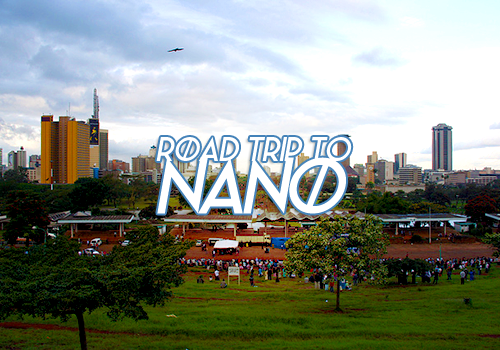
NaNoWriMo is an international event, and the stories being written every year reflect our hundreds of participating regions. We’re taking a Road Trip to NaNo to hear from our amazing volunteers and writers all around the world. Today, Elizabeth Njogu, our Municipal Liaison in the Kenya region dares us to look beneath the surfaces of stories and places:
The green city in the sun. Nairobi is Kenya’s largest city and the capital of this small-ish African country. It is home to 3.5 million people, including me. It’s full of things I love, like the great weather… and things I hate, like the insane traffic. But the one thing I love the most about my hometown is how it can surprise. Nairobi is more than meets the eye, just as any novel should be.
Culturally diverse, full of colour and contradiction, always ready to turn any assumption on its head, Nairobi is a city with a lot to offer a writer looking for a good idea. A single snapshot will tell you a story. Change the angle and you might get a totally different one. Come back another day and you may not recognize what you find. In short, there is always more to what you see than what you see…
Nairobi is a city with a heart of gold and a dark underbelly, but you can’t let that fool you into thinking you have it figured out. Which city has a sprawling national park inside it, boasting wildlife in view of skyscrapers? Yes, Nairobi boasts that unique quality. However, my city also has the largest slum dwelling south of the Sahara… whoopee (not!).
In the spirit of Nairobi, remember that everything is more than meets the eye. I suggest taking a snapshot. Don’t let what you see dictate the whole story. Instead, tell your story around it. Nairobi is a place where there are no limits to perceived reality; why should there be any limits to your imagination?
Take a snapshot of your life, or someone else’s. Research by reading a single paragraph of a reference book. Discover a place by looking at one iconic image. Use that one moment in time and expound on it. Find the gaps and the questions and fill them in yourself. Stories lend themselves to what you can make up as you go along.
You’ll never know it all. Let yourself know a little and add your particular brand of colour and light to the telling of what you know. Let your truth shine through whatever idea you pick. It’s not about noticing what is unusual or out of place (although there may be plenty of that). Our lives are infinitely interesting, infinitely inspiring, if we only notice what is there.
You already have a colourful life. Let it exist on the page and you’ll have more ideas than you can ever stand to write.
Nairobi’s Site of Future 2015 Write-Ins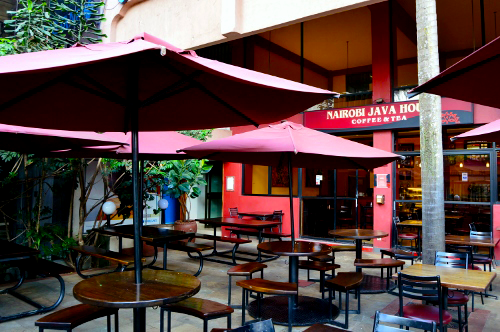 More about Kenya from Elizabeth:On Twitter: @AJupfront, #TheAfricaTheMediaNeverShowsYou
More about Kenya from Elizabeth:On Twitter: @AJupfront, #TheAfricaTheMediaNeverShowsYouOn YouTube
On the web

Elizabeth Njogu started writing formally in 2003. That is, she started writing and actually finishing what she had started somewhere in that year. Next October, a friend introduced her to NaNoWriMo. Too late to do anything about it, she vowed to try it the next year… and she did. Eleven years later, she is a NaNo veteran with wins all around and manuscripts she is quite proud of. She loves writing, its challenges, and its community. Maybe someday, she’ll publish what she’s written. For now, she lives and work in Nairobi. Research is her vocation and art is her life. She loves what she does.
Top photo by Flickr user valentinastorti.
October 14, 2015
Come Write In: Why Writers Matter to Libraries
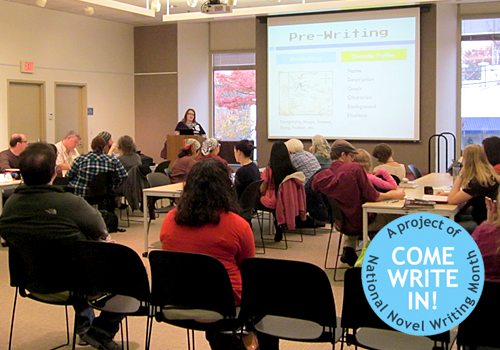
Our Come Write In program provides libraries, bookstores, and other neighborhood hubs the resources to build and support a local writing community. We dig through the stacks to bring you our favorite stories: today, Bonnie Brzozowski at the Corvallis-Benton County Public Library shares why libraries should support writers as much as they do readers:
The Corvallis-Benton County Public Library in Corvallis, Oregon serves about 55,000 people. Every time the library had hosted a writing workshop in the past it was enormously popular, so when our NaNoWriMo Municipal Liaison (ML), Elizabeth Halvorsen, approached us about hosting NaNoWriMo events at the library in 2013 we had a feeling it would be a perfect fit.
I had never heard of NaNoWriMo, so I was nervous about attendance and how much work it would be to have weekly events at the library. Turns out, there was no need to worry! About 40 interested writers were in attendance to our first ever Plot Planning Party and the enthusiasm was palpable. Elizabeth assured me she would be there to support every writing session and her presentation at the Plot Planning Party was fantastic: full of hints, tips, and tools…
The writing sessions were similarly popular and all the library really had to do was provide a space and help put out the snacks and caffeinated beverages each week.
We were so pleased with how these events went the library decided to publish an anthology of excerpts of writing done during the month. This, too, was a success and we are now going into our third year of NaNoWriMo at the library (and, our third anthology will be published at the beginning of 2016!).
“We tell anyone who attends how imperative it is they take the 50,000-word challenge come November.”We have offered a Plot Planning Party in October and weekly Come Write In sessions in November since 2013.
We offer all of the library’s events at the same time—Saturdays at 2:00 PM. The Come Write In sessions last all afternoon until about library closing time and folks can just walk in and out as they please.
There is free wi-fi, surge protectors for extra power adapters, and we bring down lots of library resources about writing, developing characters and dialogue, and more (mythology encyclopedias of all shapes and sizes seem to be especially popular consults at our NaNoWriMo events – lots of fantasy writers here in Corvallis!).
To get the creative juices flowing, we offer coffee, tea, snacks, candy, and much more to enjoy at every event. Last year and this year we also purchased some of the hip swag at the NaNoWriMo store to raffle off to lucky attendees of the library’s NaNoWriMo events. Our events are open to anyone 13 and older and we usually have at least 1-2 teens join the events, but most attendees are adults of varying ages.
As our NaNoWriMo events grow, we feel more and more comfortable devoting portions of our programming budget to their production. As mentioned above, we will publish a third anthology and, hopefully, we’ll publish even more writers than we ever have. If the book is popular again this year, we will have another book release party in the spring where we will also get a chance to tell anyone who attends how imperative it is they take the 50,000-word challenge come November 2016.
“[One participant] mentioned the library’s NaNoWriMo events helped give her the encouragement she needed.”As I mentioned above, the success of the first year’s events prompted us to want to publish an anthology of writing done during NaNoWriMo by Corvallis area writers. We advertised this opportunity at the library’s NaNoWriMo events and via press release; submissions were due by December 15 and could not be any longer than 20 typed pages. The deadline gave NaNoWriMo writers time to pick an excerpt and get it polished enough for publication.
Nine people submitted excerpts in 2013 and nineteen people submitted in 2014. The uptick in participation in the second annual anthology prompted us to also host a book release party in the spring of 2015 when the book was published and printed. The publicity around the book release party helped bring 40 people to this event including two experienced editors who have enthusiastically volunteered to edit the third Corvallis NaNoWriMo annual anthology.
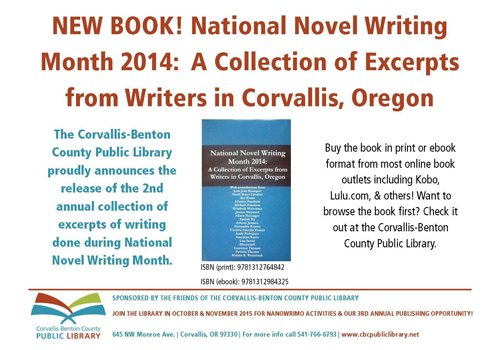
The book release party also highlighted what a fun, supportive community Wrimos have built for themselves. Further, so much library love was shared with me that day that it remains one of the best days at the library ever! Having all of the published writers come together and simply enjoy themselves (we ordered pizza!) and talk with each other and other interested people was incredibly rewarding for me. We were having such a nice time a few of us stayed late chatting about favorite books and movies.
I didn’t realize the impact having an excerpt published would have on some of the writers. So many expressed so much gratitude toward being published and having their name in a library book anyone can check out. One woman even said that searching for her name on Amazon and seeing the book come up in the results brought her to tears!
Additionally, another woman we published in last year’s anthology used the momentum of having her excerpt published to polish the rest of her book and self-publish it. She emailed me just a few weeks ago to share the news and mentioned the library’s NaNoWriMo events helped give her the encouragement needed to get there. I cannot adequately express how much that email meant to me.
Though the library orchestrates the anthology, we could not put on these events without our fantastic ML, Elizabeth Halvorsen! She is there at every event supporting both NaNoWriMo and the library. Without her (or a similarly-minded volunteer), these events simply would not happen (we have a small staff!).
Here are the links to our two anthologies published via Lulu.com:
The 2013 AnthologyThe 2014 Anthology
“Just as libraries support readers, we should also support writers.”
Overall, NaNoWriMo gives libraries a chance to nurture writers participating in an intellectual challenge, while encouraging others to get involved. Just as libraries support readers, we should also support writers and participating in NaNoWriMo is the perfect way to show off all of the awesome ways libraries can do that.
If you work at a library and want to get involved, I would say talk to your ML right away, if you have one! Ours has been instrumental in all of this and she really made it happen for us.
If you don’t have an ML, consider looking for volunteer support and/or starting off small. Perhaps you could offer writing sessions only the first year and see how well attended they are. We do not have a staff member present for the entirety of each event; we only have one staff member who helps with set up and break down. A good volunteer that already participates in NaNoWriMo and/or is a writer him/herself could easily handle being present at each writing session, assisting with any set up or breakdown, and answering questions. This is exactly what I would do if we no longer had an ML for some reason.
If you don’t have a space you can dedicate, you can still promote NaNoWriMo and encourage participation via the library’s website and social media outlets. NaNoWriMo is a natural fit for libraries and the writing sessions are very “plug and play” with fairly minimal setup and maintenance. Libraries are already essentially providing space for people to read, write, and research, so it’s really just a matter of marketing while tying your space to that most fantastic of months, NaNoWriMo.

Bonnie Brzozowski is a Reference Librarian at the Corvallis-Benton County Public Library where she has worked for four years. She was a Reference Librarian at Austin Public Library in her hometown of Austin, Texas for four years, and she received her Master’s in Information and Library Science in 2007 from the University of North Carolina at Chapel Hill. She loves comic books more than is reasonable and has been selecting graphic novels for libraries and leading a monthly Graphic Novel Book Club for seven years.
October 13, 2015
Road Trip to NaNo: Exploring the Writer’s Heritage
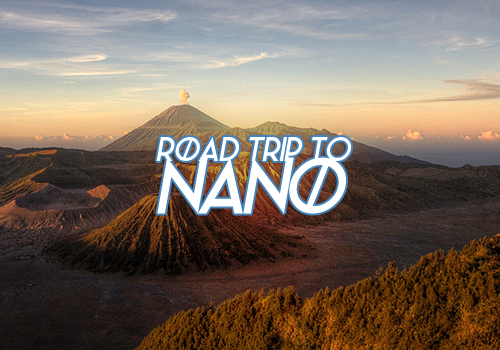
NaNoWriMo is an international event, and the stories being written every year reflect our hundreds of participating regions. We’re taking a Road Trip to NaNo to hear from our amazing writers all around the world. Today, Eve Shi, our Municipal Liaison in the Indonesia region shares how her region comes together to celebrate their cultural traditions through writing:
First, a disclaimer: Indonesia is a vast archipelagic country. I live in Bogor, a town near Jakarta, the capital. The past write-ins I’ve been a part of have mostly taken place in Jakarta. However, thanks to the internet, I’ve also been able to keep up with Wrimos in other islands and provinces. They share their experience via the NaNo forum and Facebook groups, both great ways to keep up each other’s enthusiasm. Together, we’ve been able to come together and work on projects that tie in our past with our present.
From what I gather, the Indonesian NaNoWriMo spirit boils down to the simple but invigorating phrase: “Let’s just do it!” This means writing what you want— no matter the genre, amount of research, or the writing time available. When it comes to unleashing your writing imagination and dreams, NaNoWriMo is the anything-goes season. This isn’t to say our Wrimos do scant research for their projects! Some of them take the research part pretty seriously, browsing online as well as offline resources.
Being rich in cultural heritage, Indonesia is also an endless source of inspiration for us storytellers. A couple years back, Indonesian Wrimos came together to collaborate on a little project. It started when a digital publishing company offered us a chance to publish our work with them. We had the idea to compile an anthology of retold Indonesian legends, and invited interested Wrimos to participate via the NaNo forum. Seven stories were gathered, and we even had a cover designed.
Alas, no further word from the publishing company thus far. Nonetheless, the project taught me that the best inspiration often comes from home or the places closest to it. Here in Indonesia, we were able to use NaNo’s forums to come together and celebrate our home country’s traditions via writing.
As far as I can tell, Indonesian Wrimos don’t have any special tricks for November. For an exciting start, a general one-liner will suffice. Then we ask what if? Once, twice, five times—and voila, a reservoir of ideas. One or more of them would be fun to explore during NaNo, and surely generate more ideas.
So that’s it. That’s how we buy the ticket to the wild ride in November. On behalf of the Indonesian Wrimos, I wish you a thrilling journey next month!
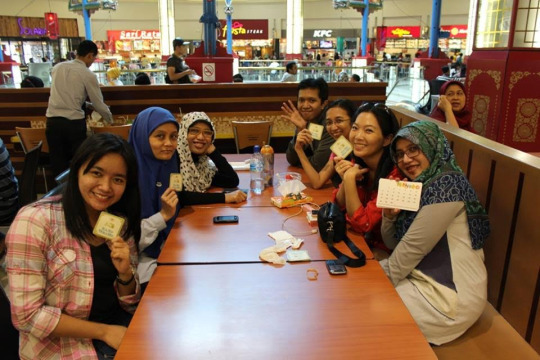

Eve Shi is a lifelong fangirl and a genre writer. She has participated in NaNoWriMo since 2007 and achieved her 50k goal every time. Her favorite non-writing hobbies include tea and hunting for official manga data books. You can find her on Twitter @ Eve_Shi.
Top photo by Flickr user mariusz kluzniak
October 12, 2015
6 Tips to Transform from Master Procrastinator to Moderately Disciplined Writer

NaNo Prep season has begun in earnest. We’ve asked some writers to share their best tips on how to write the first draft of a novel and have fun doing it. Today, writer Lisa Atenasio shares what she’s learned about her writing process… and how it might help you:
Good writers are sensitive people. Sensitive people are often easily derailed by what life throws at them.
Good writers are creative people. Creative people often rebel against structure and discipline.
Good writers are imaginative people. Imaginative people often come up with a million reasons why something is impossible.
So how on earth is a sensitive, creative, imaginative person supposed to be able to churn out an entire novel in a timely manner? With a lot of cajoling and trickery, I’ve found. Here are some of the tools I used to transform from Master Procrastinator to Moderately Disciplined Writer.
1. Allow your first draft to be terrible.At the beginning, prioritize quantity over quality. You can spend days perfecting a single paragraph, or you can plow through two thousand words in one sitting. The more you stop to judge your work, the more freaked out and overwhelmed you become.
If you get stuck on a plot point, just write the most contrived crap you can think of to get through it. It doesn’t have to be remotely good. You can always rewrite it later. Get those bones down on the page so that you have a skeleton to work with.
2. Limit your imagination to the page.When it comes to your story, allow your imagination to soar. Outside of your writing, keep it firmly in check. An unbridled fantasy life can totally derail you. It will inevitably go something like this:
You have the tiniest inkling of an idea for a novel. You imagine yourself finishing your first draft, then completing rewrites. You’ll find a literary agent, then you’ll find a publisher, then your book will become wildly successful. You’ll be able to buy multiple houses in multiple countries so that you can finally live out your dream of spending summers in the south of France eating baguettes and fresh goat cheese.
It doesn’t stop there: you’re wooed by David Benioff and D.B. Weiss who are just dying to turn your book into an HBO series, but first they’ll have to answer a series of trivia questions about the book before you give them permission; you get to handpick your cast who will no doubt include every childhood crush you’ve ever had, then you will cast yourself in a role that has a nude scene with Mads Mikkelson. You’ll lose even more time playing out that scenario in your head a million different ways, all of them ending with him very passionately pronouncing that he’s never met anyone quite like you before.
Meanwhile, the blinking cursor on your screen is mocking you.
Every writer has fantasies of where their work might take them, but the more you allow yourself to indulge in these thoughts, the more your novel remains just an idea in your head. Creating this ideal scenario in your mind where you get everything you want adds undue pressure to an already daunting process.
Also, humans are notoriously terrible at knowing what they actually want. Could be that you end up hating the south of France.
3. Treat yo’ self!I often have to bribe myself in order to write. I’ll place a chocolate chip muffin next to my keyboard and stare at it angrily as I punch out some predetermined number of words in order to feel I’ve earned the right to scarf it down. Crude but effective.
Sometimes I give up and eat the muffin without having written anything. That’s okay, too (see #5 below).
4. Find your inspiration.Figure out what it is you want to say. Examine the demons you’re struggling with in your own life, and find a way to exorcise them through storytelling.
What kept me motivated was my desire to tangle with big scary truths. Throughout the process of writing my novel, I found myself making discoveries alongside my main character. I made connections and had revelations that I never would have come to had my character not come to them first.
Writing, for me, is a form of therapy mixed with joyous self-expression mixed with a vehicle to put my soul out into the world. Figure out your own killer cocktail of motivations and then dive deep.
5. Be kind to yourself.Don’t beat yourself up when you skip a day of writing. I used to get so discouraged when I couldn’t force myself to write every day, and it would lead to me abandoning projects for good. The only way I’ve been able to keep chugging along is to let go of the difficult days and start each day fresh. (This attitude is also helpful when trying to establish a consistent gym routine. Or so I’ve heard.)
Be kind to yourself in other areas as well, because it will bleed over into your work. Instead of stressing about your lack of narrative structure, indulge in something that feeds you. Go to a movie, go for a walk in nature, go skinny dipping in the dead of night. Make sure to take time away from your writing and day job and whatever else is looming over your head to have an actual life off the page. Not only will it put you in a more at ease, relaxed state that is ideal for getting stuff done, it will make it a whole lot easier to deal with the fact that you’re not a famous writer yet. And that’s okay.
6. Take everything I’ve said with many grains of salt.Perhaps the most important thing I learned throughout this process is that everyone is different. You need to figure out what works for you.
When writing feels like pulling teeth, I do what I can and then call it a day. I like having an outline before I start. I feel freer playing within the confines of a structure than just writing into a totally unknown abyss.
However, I’m certain that there are writers out there best served by completely different methods. People who feel constricted and bored working with an outline. People who get up every morning at 6am to write for two hours (I cringe just thinking about it). People who rewrite as they go along.
I can’t tell you what to do. I can only tell you what’s worked for me, and tell you to try out different methods of attack until you find something that sticks. There is no “right way” to write. There are just whatever bits and pieces you can cobble together into a method that is uniquely tailored to your personality and temperament. Find the best ways to trick your brain into agreeing to do something as insane as writing a novel, and don’t look back.

Lisa Atenasio is a freelance writer and playwright working on her first novel. She has written for xoJane and on her blog, Lifestyles of the Bored and Anxious. She lives in Massachusetts.
Top photo by Flickr user Julie Raccuglia.
October 9, 2015
Young Writer Chronicles: 100 Students; 500,000 words
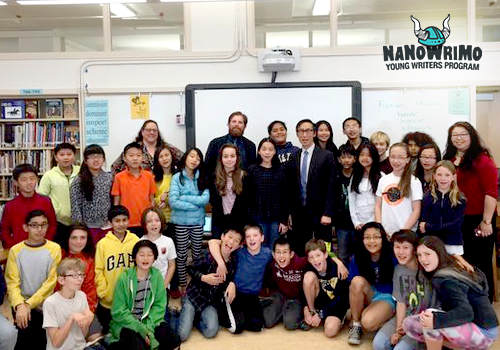
Every November, our Young Writers Program works with 100,000 students and educators, and 2,000 classrooms around the world. Today, Susie Kameny, educator at Roosevelt Middle School in San Francisco, shares how she used the Young Writers Program and watched as her students began to think of themselves as authors:
Three years ago, I decided to try out NaNoWriMo because I had heard about it through social media, my friends, and 826 Valencia. I knew that my elementary students, at one of the top 10% lowest performing schools in California, could do this challenge. I found six girls to give it a try. They each wrote stories that were 2000 words long, a monumental task for fifth grade English Language learners. We ended up publishing a small reader with the girls’ stories and artwork. They were thrilled to get a book that they made in the mail.
NaNoWriMo; 100 Students; 500,000 WordsLast year, I decided to offer NaNoWriMo up to all of the 700 students at my current school, Roosevelt Middle School in San Francisco. I built a form and spreadsheet in Google Apps so I could manage all of the participation. The form asked for student information, link to their work, and a proposed title.
I also wooed the English Department so that they would play along in their classes. They were very worried about needing to grade, edit, and finish the kids’ work. I reassured them it was just about the story and finishing. Sixth grade students had to complete 6000 words, 7th grade had to complete 8000, and 8th grade had to write 10,000 words. Kids who met their quota got a certificate, sticker, and cupcake. Adults are still boggled by the fact that students would do all of that writing just for the glory of writing.
I had 100 students participate: 35 wrote over 6000 words, and four students wrote 50,000 words just like the adults. On December 1, I tallied up student work and added up their total words written and found that we had collectively written over half a million words. Our district (SFUSD) tweeted out our final tally.
“Students think of themselves as real authors”Watching student think of themselves as real authors, and not just doing another assignment was my favorite thing to see. I had a particularly fun time helping the kids to develop characters.
I was quite touched because a student came to me recently and asked if we were doing it again this year because she had another story to tell. We were also excited to welcome San Francisco Supervisor Eric Mar for a reading of some of our students final stories (pictured at top). This was really exciting.
This year, we hope to partner with a local bookstore to do another reading in a real bookstore.
If you’re trying to bring NaNoWriMo’s Young Writers Program into your school, get the English teachers and department on board. Share the curriculum with them, and get them excited. Have them understand their role as cheerleader and thoughtful commenter: they can allow time for this unstructured writing with little or no constraints. Let them know that they are gamifying the classroom and that they will get excellent results.
On a final note, I have never yet been a participant in NaNoWriMo. I have deeply struggled with writing my whole life because of my own personal learning disabilities, but it is about time to give it a try. It has been a powerful experience to encourage my students to just write. This has been a way to sort out my own struggle and to seek new ways to communicate in writing.
I have been working with our special education kids to write more, and they are starting to use speech to text. I am tempted to give this method a try so that I can play along this November.

Susie Kameny has been a technology teacher in SFUSD for eight years at Bilingual/Immersion Title 1 schools. She currently is a Curriculum Technology Integration Specialist at Roosevelt Middle School and has taught technology at various other SFUSD schools for nine years. In 2014, she received Outstanding Emergent Teacher from CUESF and has presented at CUE Fall Conference. Currently, she is a CUESF Board Member and former founding Co-President. She finished her social-justice-oriented teacher credential program at New College of California. Having been trained as a Merit Scholar through the Krause Center for Innovation, and in Design Thinking at Stanford, she is a strong advocate for Maker pedagogy.
October 8, 2015
Road Trip to NaNo: Fill Every Space with Creativity
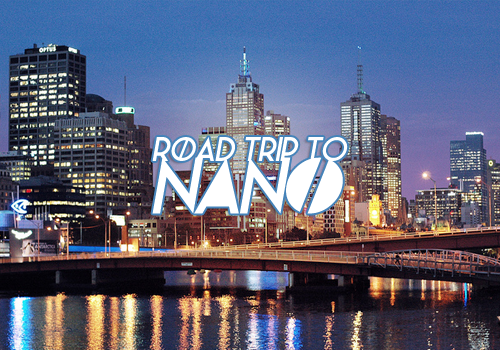
NaNoWriMo is an international event, and the stories being written every year reflect our hundreds of participating regions. We’re taking a Road Trip to NaNo to hear from our amazing volunteers and writers all around the world. Today, Lauren Mitchell, our Municipal Liaison in the Melbourne region shares her experience of helping create a NaNo community:
Melbourne has always been driven by a strong creative spirit. Named one of UNESCO’s Cities of Literature in 2008, the city hosts the Melbourne Writers Festival, the Fringe Festival, and the International Comedy Festival, among numerous other artistic and literary endeavours. Packed with street art and quaint cafés, rich with library networks, and buoyed up by the creative spirits of thousands of people, Melbourne’s artistic heart beats strongly.
When I started volunteering with NaNoWriMo as a Municipal Liaison in 2009, we were only tapping into a fraction of that creative spirit…
I’d thrown myself in the deep end by opting to ML solo, when the region previously had two MLs. But I love my city, and I love all the places around it that can provide so much inspiration, so I was determined to try and get more events up and running across the city and as widespread as possible to try to get as many people involved as I could. More and more people were showing up to events and talking about how fantastic it was to meet other Wrimos in person. That energy was something I wanted to support.
Since then, we’ve had so many write-ins in so many different spaces. Libraries, office buildings, cafés, food courts, people’s homes, and more, have held Wrimo gatherings. We’ve had write-ins with four people hanging out in someone’s living room, and we’ve had write-ins with 50 people spread out in an office building in South Melbourne. Some of them are more productive than others, but all of those spaces, big or small, have been filled with that creative spirit.
I guess the message I want people to take away from this is to use the spaces you have available to foster community writing. Not every writers’ gathering has to be a big one. And while you’re thinking about how to use the spaces you have, don’t forget the most important one of all: the space on the page in front of you. That is the most important space to fill. As Jodi Picoult wrote, “You might not write well every day, but you can always edit a bad page. You can’t edit a blank page.”
Melbourne’s NaNoWriMo Kick-off Party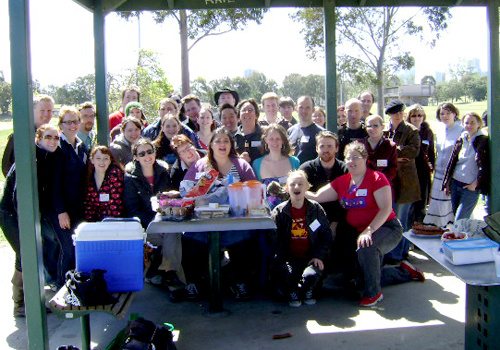

Lauren Mitchell has been NaNo-ing since 2003. She is currently undertaking a Master of Communication at RMIT University as well as working for Ticketmaster Australia. She holds a BA in Creative Writing and Psychology, and a Grad Dip in Editing and Publishing. She was the winner of the 2014 ASFF Amateur Short Story Award. Her 2007 NaNo-novel,
The Fear Collectors
, has been accepted by Satalyte Publishing. Her 2011 NaNo-novel, retitled
The Triad Trial
, has been accepted by Less Than Three Press and is now available for pre-order.
Top photo by Flickr user 4yas.
October 7, 2015
Come Write In: Learn, Connect, Grow
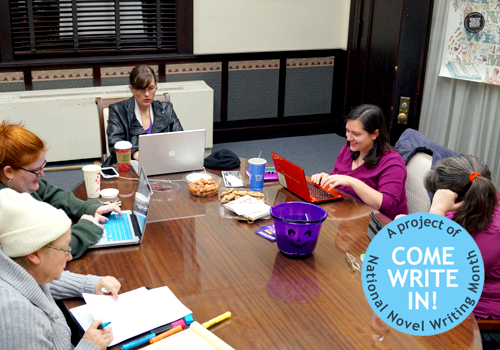
Our Come Write In program provides libraries, bookstores, and other neighborhood hubs the resources to build and support a local writing community. We dig through the stacks to bring you our favorite stories; today, Dana Brigandi at the James V. Brown Library shares how NaNoWriMo helped them build a new amazing writing community:
The James V. Brown Library is the first and only public library in Williamsport, Pennsylvania. I think we have the best mission statement: The place to go to learn, connect and grow.
The library regularly features authors who promote their books, talk about their works and the writing process, and other aspects of publishing, such as e-publishing and self-publishing. We try to accommodate authors whenever we can. We recently received a grant from the Sisters in Crime organization and hosted one of their authors and we have a lot of success with Amish romance authors in this area, too.
We began working with NaNoWriMo in 2014. My favorite part of being involved is seeing what everyone is interested in and writing about.
One local author, Carrie Anne Noble, worked on her book, The Mermaid’s Sister, during NaNo and it was published and named a 2014 Amazon Breakthrough Novel Award winner for Young Adult Fiction. She ended up holding her book launch/release party here in March 2015 and it was well attended.

Our local NaNo group also held their wrap-up party here in December last year so it was a great time to meet the authors from this region.
The NaNo group also was supportive of my efforts during November when I did the bulk of the writing for my recently published nonfiction book. Although I didn’t make the 50,000-word count (my goal and deadline only permitted about half of that), it was nice to know I had company in writing!
If you’re a library or community center that’s thinking about partnering with NaNoWriMo, just do it! Reach out and become a Come Write In location—what’s the harm in trying? You’ll bring new people into your space and create amazing partnerships.
If you do decide to host NaNoWriMo events, you can promote your open times via social media (@jamesvbrownlibrary on Tumblr!), press releases in the local newspaper, posters in the library and around town, and via our weekly e-newsletter and printed bi-monthly newsletter.
And who knows, maybe the next Rainbow Rowell will be among your Wrimos!

Dana Brigandi has been at the James V. Brown Library since September 2013 as the leadership assistant and the public relations and community partnership coordinator. She has a master’s degree in liberal arts from Lock Haven University and a bachelor’s degree in mass communications from the University of South Florida, Tampa. She recently was accepted in the master of library science program at Clarion University so she hopes to become a librarian soon!
October 6, 2015
Road Trip to NaNo: Find Your Creative Spark In the Details
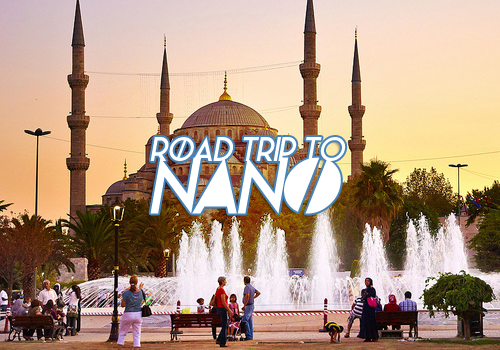
NaNoWriMo is an international event, and the stories being written every year reflect our hundreds of participating regions. We’re taking a Road Trip to NaNo to hear from our amazing writers all around the world. Today, Ayfer, our Municipal Liaison in the Turkey region urges you to find your creative spark in the details:
The date is September 25th. The time is 9:24pm. The temperature is 29 degrees Celsius. I’m sitting outside on a terrace and the moon is high and shiny behind me. From where I sit, I see the Bosphourus and notice the alarming silence of it– most of the time, the sea lets out the cry of strident seagulls and busy ship horns. Even the Byzantine and Ottoman treasures and ghosts buried for centuries in the deep water whisper a cry for attention from time to time. Any person sitting on the Bosphorus’ shore looks up at the night sky and recognizes the Turkish flag. According to legend, the reflections of the stars on defeated enemies’ blood inspired the flag’s design…
When I turn my head, I see the red lanterns that always fill me up with some joy, making me forget that the atmosphere here in Istanbul can get serious: the call for prayers broadcast through loud speakers five time a day, more chanting when someone dies to announce the end of a life…
But those red lanterns flying high in the sky, contrasting the numerous old ruins—including the one in our garden down below—add a happy, yet melancholic edge to the city.
Today I saw a man hitting his wife in the street while telling a story… or getting angry for what she’d done or said to someone? The man was stocky and the wife chubby. After she fell in the bushes, she stood back up with a terrorized stoicism, the split second look on her face behind her thick glasses communicating, “If I show distress he will hit again; if I walk too far from him showing I am not pleased, he will hit again.”
She walked as near to him as possible to show a placid confidence, their young son walking in front of them. Was he aware? I raised a hand; the man threatened me, too. Angry, shaking and scared, I walked away quickly. Today is the second day of Eid al-Adha, the feast of the sacrifice. Our city’s population is 14 million people. All of this happened in central Üsküdar. Layers and layers of impressions.
I sit here and reflect on how Turkey has affected the way that I write today. I used to be scared of writing a whole novel using the same characters and plot in 50,000 words. It wasn’t until I participated in my first NaNo a few years ago that I really stopped being afraid. I’ve learned from writing furiously that it is crucial not to stop, not to look back, and to keep at it no matter what.
My first NaNo was also when I realized that my whole novel did not have to be solely about the main character. Instead, it could be about details: everything he hides, his surroundings, his best friend, his mother, his city, the crumbling wall in his garden that is 700 years old, maybe even older. The novel could be about his resemblance to his great-great-grandfather, who was an imam at the big mosque two blocks away from his house. The main character is an atheist; what would happen if he met this ancestor? If he came to Istanbul to sort out his family’s affairs, precisely at the moment when the Bosphorus had spit out an artifact that was the proof needed to end all religions in the world?
I began writing this story during NaNoWriMo. Two years later, I am still working on it with everything I’ve got. I’ve received love, hate, and rejection (lots of it), but the story is alive and it is mine!
Looking back at my own experience, I believe that all you really need to complete a novel is a spark. It doesn’t come from anywhere external; it comes from within: your heart, your childhood, your genes, your experiences, your uneventful quiet moments alone with people. The spark, the spark: that funny moment you have looking in the mirror, often fueled by something you care about emerging disguised. It is the deepest detail that moves you, a dream before dawn that follows you all day, a scene that strikes a chord deep.
The challenge is that you will most likely go through so much bad writing before you write anything good. Miles of writing, a trip that might take you all the way into space. But that journey to Mars is your life: with a lot of patience and hard work, with fear and courage, you will enjoy every bit of it and ultimately succeed.
Turkey’s 2014 Kick-off Write-In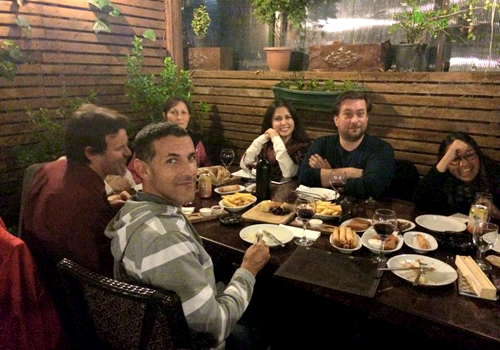
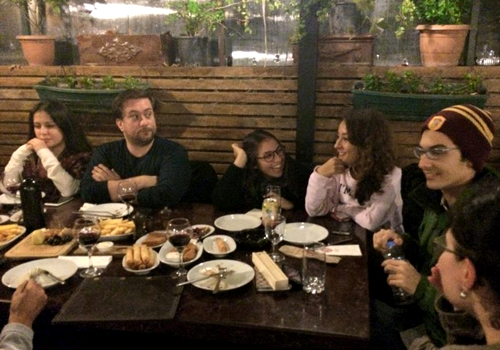

Ayfer is a Turkish-born writer raised in France. After attending university, she travelled and lived in Ireland and Japan, where she met her husband. She also backpacked for a year around half the world. She now lives in her great-grandmother’s restored house in Üsküdar with her husband and daughter. In Üsküdar, she works in an office, writes music reviews for the monolithcocktail blog, and designs for Travelove.
Top photo by Flickr user Moyan_Brenn
October 5, 2015
NaNoWriMo 2015: Site Launch!
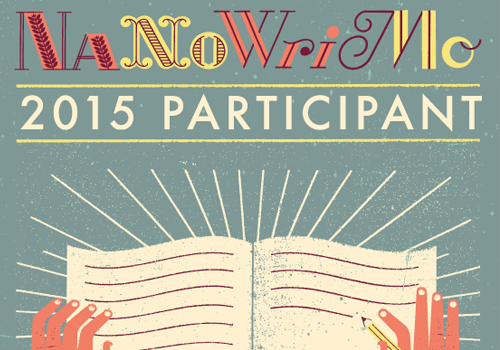
Your imagination is brimming with stories: they’re calling out to be written, reaching for that empty shelf in “The NaNoWriMo Library.” You’re eager to release those characters and unexplored worlds onto the page.
And we’re eager to tell you that… the NaNoWriMo 2015 website is now live and ready for you!
Here’s what you can do right now:Then:
Peruse the NaNo Prep stacks. To further support you in your epic quest for a creative victory this November, we’ve rounded up a wealth of resources, including pep talks and virtual events featuring extraordinarily talented authors, Wrimos, and staff.Recruit a fellow writer. We’re hosting the biggest and best writing extravaganza at “The NaNoWriMo Library” this November and our guest list is open to all.Here’s a quick tour of the exciting new tools and enhancements we’ve added:New personal achievement badges! We created some new flair to help you express—and show off—your NaNo identity. New writing badges! We’ve added a few new writing badges to help motivate you and get you into the habit of writing every day. Check them out on the dashboard on the homepage.Lifetime Achievement! 50,000 words? How about 50,000,000? Check out your Author Info page to see your cumulative word count for all the Novembers you’ve tackled.NaNoMail improvements! We’ve streamlined NaNoMail to improve your messaging experience.
Done with all that? Want to support NaNoWriMo?Get sponsored. Commit to your novel, help keep our programs and events running, and earn donor goodies by creating a fundraising page and getting sponsored.Donate. By writing your novel this November, you’re declaring that your story matters. By donating to NaNoWriMo, you help others around the world see that their stories matter, too. Get stocked up. Shop in our online store and flaunt your NaNo pride.
Without you, this creative community wouldn’t be the same. Thank you for being here and for believing in stories.
Off to practice my NaNo library voice (spoiler alert: it’s not a whisper),
Rebecca Stern
Director of Programs
October 2, 2015
8 Tips for Writing a Novel this November
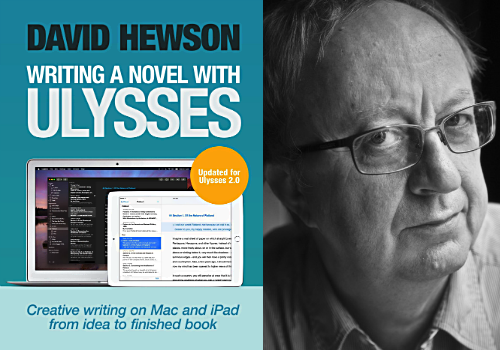
Every year, we’re lucky to have great sponsors for our nonprofit events. Ulysses, a NaNoWriMo 2015 sponsor, is offering all participants a free trial of their writing software through December 7. Plus, to help you get going, they asked author David Hewson for his tips on how to start writing a novel:
David, can you tell how many words you write during one month, on average?
I generally write a book of more than 100K words in six months or so. But I’m a bad example because I’m writing commissioned books to a particular timescale. Before this I wrote much more quickly for some reason. My second book Epiphany was 160K words and I wrote it in ten weeks. But I was younger then and I guess that book was just waiting to come out.
You’ve published more than 20 novels. How does it actually work to write a novel? Do you have some tips to get started?
The best teaching tool for writing is readily available. It’s the book. If you’ve read widely and thought about the books you like and dislike you should have a hang of what’s going on in mainstream narrative fiction. Yes, it’s a story with a beginning, middle, and end. But it’s also a journey, from life to death, ignorance to knowledge, love to hate or vice versa.
When you think of a book as a journey you then realise you need waypoints, movement, progress. Before I start writing I always develop a few of these starting with what is often called the inciting incident—an event that makes the story happen, even though it will often be revealed part way through the piece.
So perhaps I have an inciting incident that looks like this…
The mound that’s appeared in the playground turns out to be the hull of a space ship.
Once I’ve written that, I know several things. I need to create characters to make this discovery. I need to describe the playground and the school to which it’s presumably attached. Already I have the three cornerstones of narrative fiction: the world in which the story takes place, the characters that populate that world, and the events that drive the story.
So now I would add in some scenes before the inciting event.
Danny arrives at school to discover there’s excitement about something weird.
On the way in he’s bullied by Joe and picked on by nasty teacher Williamson.
Jenny, a friend he’s secretly in love with comes to his rescue.
Barnes, the dry, distant head teacher tells them about the discovery and through this we begin to learn about the school. It’s a grim, prison-like place. They’re under strict orders to go nowhere near the mystery object.
Joe picks on Danny again and dares him to break the rules for once and disobey the headmaster even though the risks are immense. Foolishly trying to impress Jenny, Danny agrees to do it.
And here we make the discovery of the inciting incident… The mound that’s appeared in the playground turns out to be the hull of a space ship.
There are at least seven or eight scenes there and I’d guess 10,000 words waiting to be written. I may not know what they are but at least I have an idea of where the story’s headed and I have gaps to fill in. I always finish a scene in one day in rough then begin the next day by editing it then writing the next one. I never leave the computer without a rough heading indicating what’s going to be written next.
Note this is a rough story skeleton not a true outline—I don’t know what happens when Danny encounters the space ship. I’m also open to allowing the characters to develop and reshape the story as it goes along.
Which tools do you use for writing?
Over the years I must have bought every story tool ever produced, from outliners to theory applications to writing apps supposedly dedicated to fiction.
My firm conclusion now is this: use the bare minimum and keep it simple. If you’re writing something like Game of Thrones you might argue you need very detailed timeline and story management apps to control every last detail. But George RR Martin uses Wordstar and a Rolodex file. So you don’t. And most of us aren’t writing things that complex anyway.
About 98% of my time is spent in Ulysses, both for writing the actual book manuscript and managing the project through a book diary, character lists and any research I’ve picked up along the way. For casual note-keeping I use Google Keep and occasionally Microsoft OneNote (though I’m using the latter less and less and tending to keep important stuff in Ulysses).
I also use a great Android/Chrome app called Journey for keeping a book diary. The joy is, I can use it on my Android phone too (if I had an iPhone I’d use Day One). I have a few outlining apps which I pull out from time to time to play with, but that is usually as a pathetic work-avoidance routine (yes, we all have them).
You have published a book about using Ulysses for novel writing, so it seems to be particularly suitable for that purpose. What do you like about it?
The longer I’ve spent writing the more I’ve been convinced that simplicity beats complexity every time. But a lot of minimalist writing apps are just too simple. As soon as you get beyond a few thousand words you realise there’s no way you can manage a long document with them.
Ulysses is the only app I know that combines a very minimalist writing interface with the backend power to manage and shuffle around the many different parts and scenes that go into a book.
I’ll spend most of my time in a single sheet working on a scene. But when I need to split that scene or move it through the manuscript it’s dead easy. And I can edit non-contiguous scenes just by selecting them with the Command key. This is incredibly powerful but also very simple to use and understand.
Ulysses can bounce between the three principal views of a book in a keystroke: the master overview, the section view and the individual scene. The story skeleton idea I sketched out above works brilliantly in it. All I do is put at the top of each scene a comment outlining what’s going to happen, then add in and split more scenes as the story grows. The writing happens inside the narrative itself, not in the cold, dry field of research.
Another important aspect for me is the way Ulysses syncs through iCloud across Macs and the iPad, too. This means I can edit and write pretty much anywhere and never have to worry about losing data, or having to go through a painful manual sync process. It’s important to take advantage of every possible writing moment, especially for something like NaNoWriMo.
I love it.
Hundreds of thousands of people will commit to write a novel during November, many of them on top of their regular obligations. As an expert in this field, what would you advise them?
Choose the right tool and stick with it — don’t even think of moving to something else part way through.Keep it simple. Don’t fool yourself into thinking complexity will cover up for a lack of ideas.Listen to your characters. Let them talk in your head. Note down what they say. Make sure they have individual voices. Get them right and they’ll start to write at least part of the story for you.Manage your time effectively — you won’t have as much as you want or need. Keep the book alive by making notes on your phone—with apps like Journey, Google Keep, Day One—when you have spare moments.When you get stuck go for a walk, a beer, do something different. Many seemingly intractable problems don’t appear so bad a day later.When faced with really intractable problems remember — when in doubt, cut it out. It’s usually easier to excise them than fix them.Don’t ask for anyone’s opinion. You don’t have time… and besides it’s your story, not theirs. Most of all… have fun. If writing is a pain it will be very apparent in the reading.Good luck!
Remember, Ulysses is offering a free trial version of their writing software to all NaNoWriMo participants through December 7. Plus, if you’re one of the first 200 to purchase the software, you’ll also receive David Hewson’s “Writing a Novel with Ulysses” for free!
David Hewson was a journalist for The Times and The Independent before he started writing mystery novels. To date he has published more than 20 novels and several guidebooks for aspiring authors, among them “Writing a Novel with Ulysses”. Hewson’s books have been translated into more than 25 languages and his latest series, set in Amsterdam and launched with The House of Dolls, is in development for Dutch TV.
Chris Baty's Blog
- Chris Baty's profile
- 63 followers



